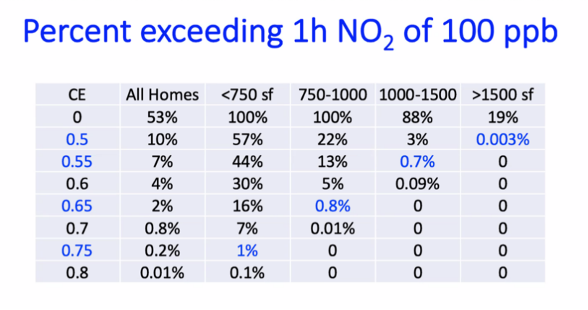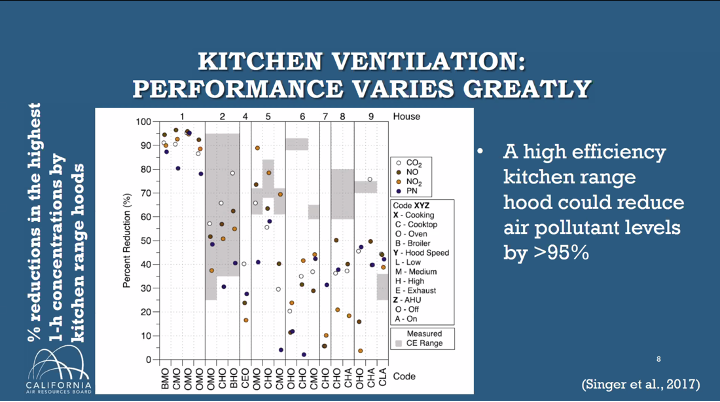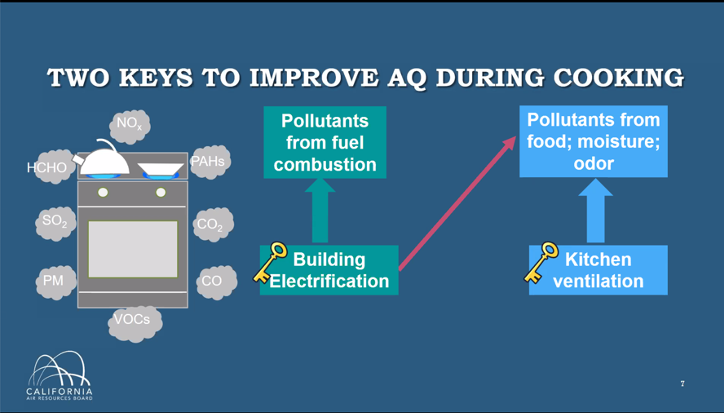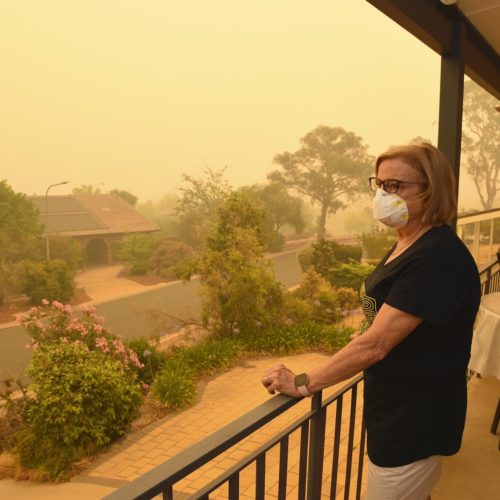Frying pan on gas stove

Three Key Takeaways from California’s First Workshop on Health Impacts of Gas Stoves
This week saw a breakthrough for regulation of indoor air quality in the United States. On September 30, the California Energy Commission (CEC) held a workshop on the health effects of gas appliances. This historic workshop highlighted the ways in which the CEC can help reduce the health impacts of gas appliances through improved ventilation requirements under its Title 24 Building Energy Efficiency Standards.
The agency staff, scientific experts, panelists and community stakeholders who attended the workshop unequivocally agreed that gas stove emissions present a unique threat to public health—especially to vulnerable communities and sensitive populations—and must be addressed quickly.
The California Air Resources Board (CARB), the state’s lead agency on air quality and an internationally respected authority on all things air pollution, presented three clear messages at the workshop:
- The use of gas appliances has adverse health effects,
- ventilation is necessary but not sufficient to address these impacts, and
- building electrification can eliminate these harms.
This is the clearest statement to date from a government agency warning that gas appliances, even with ventilation in place, harm our health.
- The Use of Gas Appliances Has Adverse Health Effects
Yifang Zhu from the UCLA Fielding School of Public Health presented research demonstrating that air pollution from gas-fired furnaces, water heaters, and stoves increases rates of respiratory illness, cardiovascular diseases, and premature deaths. Recent research also shows that the types of pollutants emitted by gas appliances (especially nitrogen dioxide [NO2]) increase the susceptibility to viruses, such as COVID-19. Furthermore, low income people and people of color, who already face some of the worst air quality in the state, are most at risk of indoor air pollution from gas appliances. The workshop made conclusive that gas appliances are a public health issue.
This was supported by the physicians present at the workshop. “For my patients who live lower-income communities in which old gas stoves without ventilation are used frequently, I see increased symptoms like cough, wheezing, and I find myself prescribing more and more inhalers, which can be difficult in terms of cost and my patients’ own fatigue in having to keep track of their medications,” noted Dr. Christine James of CA Climate Health Now.

- Ventilation is Necessary but not Sufficient
Brett Singer from Lawrence Berkeley National Laboratory, which conducts scientific research on behalf of the US Department of Energy, elaborated further on issues related to indoor air quality and ventilation in homes. Residents often rely on their home’s mechanical ventilation systems for any issues related to indoor air quality—for example, when they cook. And California’s Title 24 Building Standards have required mechanical ventilation in new homes since 2008.

However, studies show that although many homes meet these ventilation equipment requirements, only about a quarter of residents actually use them. When using gas burners without adequate ventilation practices in place, Singer’s research found that a “really alarming fraction of homes” exceeded indoor 1-hour standards for NO2. In other words, the indoor air quality of these apartments was so poor that it would have been illegal if measured outside. In homes with less effective ventilation systems (which capture efficiency at 50 percent or lower), up to 57 percent of homes exceeded 1-hour standards for NO2.
The disparity between indoor and outdoor air quality requirements was noted by Mothers Out Front at the workshop. “Why would we set standards for outdoor air quality but neglect the quality of our air indoors, where we spend far more time?” asked Stephanie Morris, in a statement on behalf of Mothers Out Front. “The current public health crisis only heightens the urgency to take bold and effective steps to reduce indoor air pollution.”
These troubling findings underscored the need to ensure that ventilation should not simply exist, but it must operate any time pollutants exceed safe levels. Gas stoves produce NO2 and other pollutants simply from turning on the flame, above and beyond the particulate matter (PM2.5) emissions released during cooking on any stove. In fact, the US Environmental Protection Agency found that homes with gas stoves have between 50 and 400 percent higher concentrations of NO2 than homes with electric stoves.
Because of this additional pollution from gas stoves, they need stronger ventilation standards than electric stoves. This includes more stringent requirements for hoods over natural gas than electric ranges.

- Building Electrification Can Eliminate Health Harms
Thankfully, the messages during the workshop were not all doom and gloom. CARB identified building electrification as one of the key strategies to reduce indoor air pollution by avoiding fuel combustion from gas stoves. Electric stoves provide much healthier and climate-friendly options, with many chefs preferring new induction models over gas, due to more precise temperature controls and quicker heating.

Conclusion
At present, it is unclear how much of the feedback from this workshop CEC will utilize to inform its standards. The most likely outcome seems to be a ventilation standard that distinguishes between gas and electric stoves and is based on a percentage of capture efficiency. But the workshop was a clear win for building electrification and a carbon-free future, especially in light of CARB’s clear and unwavering statements on the health dangers of gas appliances. The agency also plans to simultaneously update its indoor air quality guidelines.
Gas-free, all-electric buildings help create healthier communities and move toward a solution to the climate crisis. Evidence has grown ever clearer that gas stoves pose a serious health concern. The CEC workshop demonstrated serious attention to this issue on behalf of the State of California, and what could be the beginnings of policies that can quite literally save lives.


